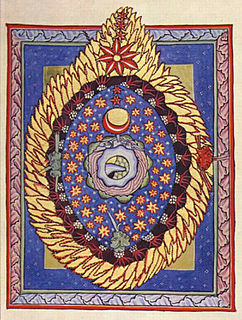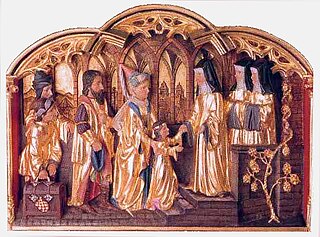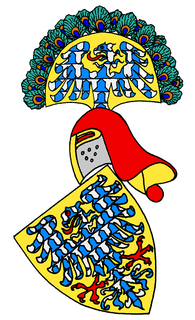This page is based on this
Wikipedia article Text is available under the
CC BY-SA 4.0 license; additional terms may apply.
Images, videos and audio are available under their respective licenses.

Since the death of the historical Buddha, Siddhartha Gautama, Buddhist monastic communities have periodically convened to settle doctrinal and disciplinary disputes and to revise and correct the contents of the sutras. These gatherings, referred to by historians as 'Buddhist councils', are recorded in the Buddhist sutras as having begun immediately following the death of the Buddha and have continued into the modern era.

Buddhism in Thailand is largely of the Theravada school, which is followed by 94.6 percent of the population. Buddhism in Thailand has also become integrated with folk religion as well as Chinese religions from the large Thai Chinese population. Buddhist temples in Thailand are characterized by tall golden stupas, and the Buddhist architecture of Thailand is similar to that in other Southeast Asian countries, particularly Cambodia and Laos, with which Thailand shares cultural and historical heritage.
Buddhism in Cambodia has existed since at least the 5th century. In its earliest form it was a type of Mahāyāna Buddhism. Today, the predominant form of Buddhism in Cambodia is Theravada Buddhism. It is enshrined in the Cambodian constitution as the official religion of the country. Theravada Buddhism has been the Cambodian state religion since the 13th century. As of 2010 it was estimated that 96.9 percent of the population was Buddhist, and is currently estimated to be the faith of 95% of the population.

Alina, regina di Golconda is an opera in two acts by Gaetano Donizetti. The Italian libretto was written by Felice Romani after Michel-Jean Sedaine's French libretto for Pierre-Alexandre Monsigny's ballet-heroique Aline, reine de Golconde, in its turn based on the novel by Stanislas de Boufflers.

Robin Hood and the Monk is Child ballad 119, and among the oldest existing ballads of Robin Hood, existing in manuscript from about 1450.

The United States competed at the 1968 Winter Olympics in Grenoble, France.

Haiti competed at the 1996 Summer Olympics in Atlanta, United States. The Haitian team consisted of seven competitors: three track and field athletes, two judoka, one swimmer and one tennis player.

Scivias is an illustrated work by Hildegard von Bingen, completed in 1151 or 1152, describing 26 religious visions she experienced. It is the first of three works that she wrote describing her visions, the others being Liber vitae meritorum and De operatione Dei. The title comes from the Latin phrase "Sci vias Domini". The book is illustrated by 35 miniature illustrations, more than that are included in her two later books of visions.
Volmar Wikström was a Finnish wrestler from Pargas, Olympic medalist in freestyle wrestling.
Adler Volmar is a Haitian-American fourth-degree black belt judoka. A dual citizen, he competed for Haiti at the 1996 Summer Olympics and for the United States at the 2008 Summer Olympics.

Joseph Simon Volmar was a Swiss painter and sculptor.
Christina of Vasaborg (1644–1709) was the eldest child of Gustav of Vasaborg, Count of Nystad, and a granddaughter of King Gustavus Adolphus of Sweden.

Countess Jutta von Sponheim was the youngest of four noblewomen who were born into affluent surroundings in what is currently the Rhineland-Palatinate. She was the daughter of Count Stephen of Spanheim.
Galerie Ror Volmar or Ror Volmar Gallery was an influential art gallery located at 58 Rue de Bourgogne in the 7th arrondissement of Paris. The gallery specialized in contemporary figurative painters. In 1970, Art International reported that the gallery had been "holding an exhibition of paintings unusual both in content and treatment." Ukrainian painter Liuboslav Hutsaliuk held his first exhibition at the gallery in 1956. Tamara de Lempicka showcased at the gallery from 30 May to 17 June, 1961. Durnad Rosé showcased at the gallery from 10 to 23 November, 1967. In 1977, the gallery honored Marcel Anselme.
The Secretary of Sports and Recreation of Puerto Rico is responsible for the development and management of all matters related to sports and recreation in the government of Puerto Rico. The Secretary heads the Department of Sports and Recreation.

The House of Frohburg was a noble family in medieval Switzerland, with possessions in what is now the canton of Solothurn. They originate in the Wigger basin, near Zofingen. In the 10th century, they built their "Frohburg" castle on a hill near Trimbach.
They had the title of counts from the later 11th century. They ruled the lands between Olten and Solothurn, and took parts of Aargau and Sisgau as fief from the bishop of Basel.
They reached the peak of their power in the later 12th and early 13th century, building a number of castles, and founding towns such as Aarburg, Liestal, Olten, Waldenburg, Wiedlisbach and Zofingen. They also founded Schöntal Abbey near Waldenburg.
The House of Frohburg was divided into three branches, Neu-Homberg, Waldenburg and Zofingen, in c. 1250.
The Zofingen branch was extinct in 1307, followed by the Neo-Homberg one in 1325. The Waldenburg branch survived for another 40 years but declined in influence, being forced to sell most of its possessions, most of them to the ascending House of Habsburg.
The last count of Frohburg was Hermann VI.











